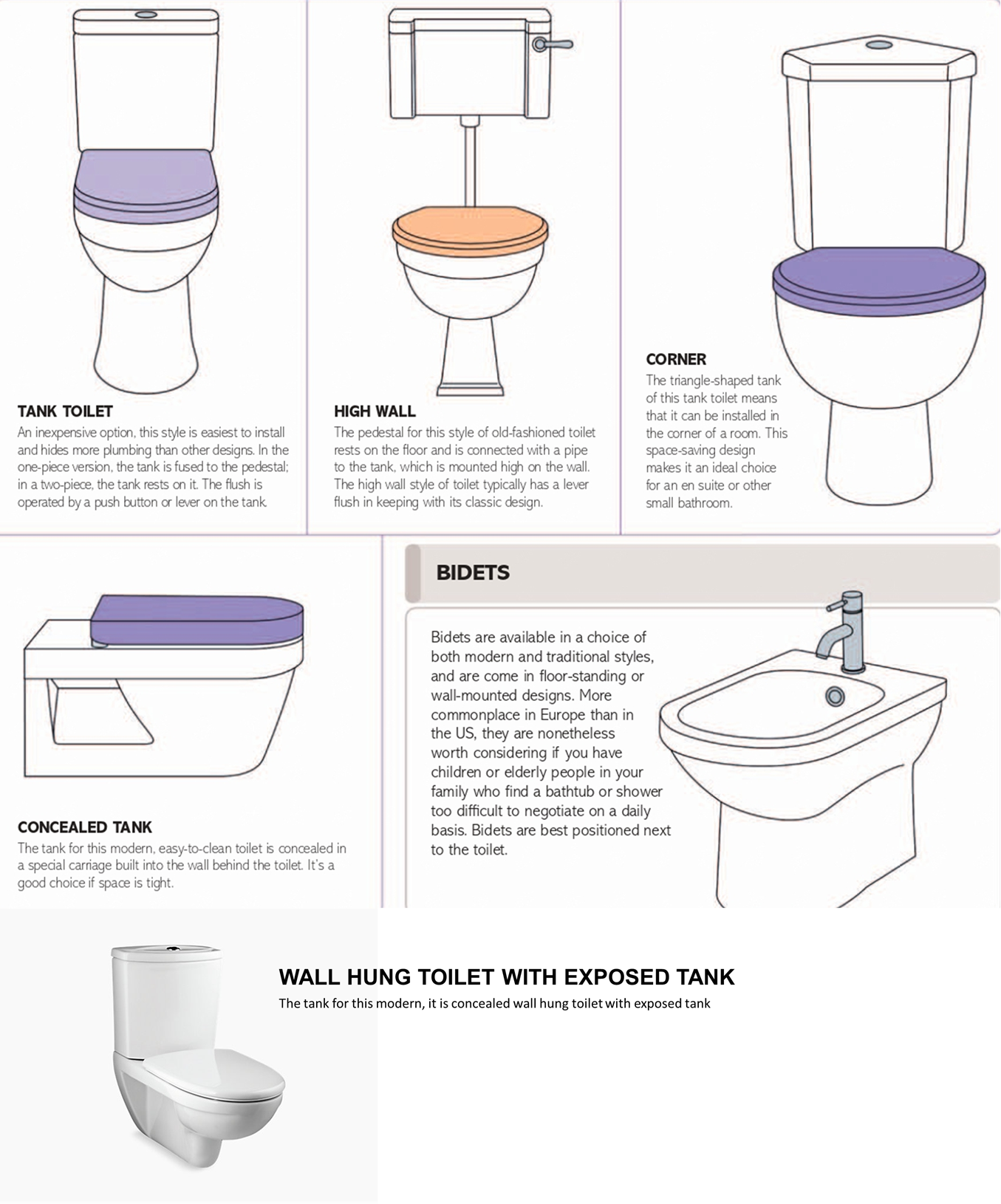While the toilet might not be the focal point of your bathroom, you should still pay attention to its design. By doing so, you will ensure that it fits in with the rest of the room’s scheme, might save you valuable space if you need it, could be easier to clean, and may help you economize on water usage.
CHOOSE THE TYPE
The type of toilet you choose will largely depend on
whether you prefer a contemporary or traditional look to the room. You will also need to consider where it will
be placed, and whether you prefer the look of a one- or two-piece toilet.
TANK TOILET
An inexpensive option, this style
is easiest to install and hides more plumbing
than other designs. In the one-piece
version, the tank is fused to the pedestal; in a two-piece, the tank rests on it. The flush
is operated by a push button or lever on
the tank.
HIGH WALL
The pedestal for this style of
old-fashioned toilet rests on the floor and
is connected with a pipe to the tank, which
is mounted high on the wall. The high wall
style of toilet typically has a lever flush
in keeping with its classic design.
CORNER
The triangle-shaped tank of this tank toilet means that it can be installed in the corner of a room. This space-saving design makes it an ideal choice for an en suite or other small bathroom.
CONCEALED TANK
The tank for this modern, easy-to-clean
toilet is concealed in a special carriage
built into the wall behind the toilet. It’s a good choice if the space is tight.
WALL-HUNG TOILET WITH EXPOSED
TANK
The tank for this modern, it
is concealed wall-hung toilet with an exposed tank
BIDETS
Bidets are available in a choice of both modern and traditional styles and come in floor-standing or wall-mounted designs. More commonplace in Europe than in the US, they are nonetheless worth considering if you have children or elderly people in your family who find a bathtub or shower too difficult to negotiate on a daily basis. Bidets are best positioned next to the toilet.








No comments:
Post a Comment